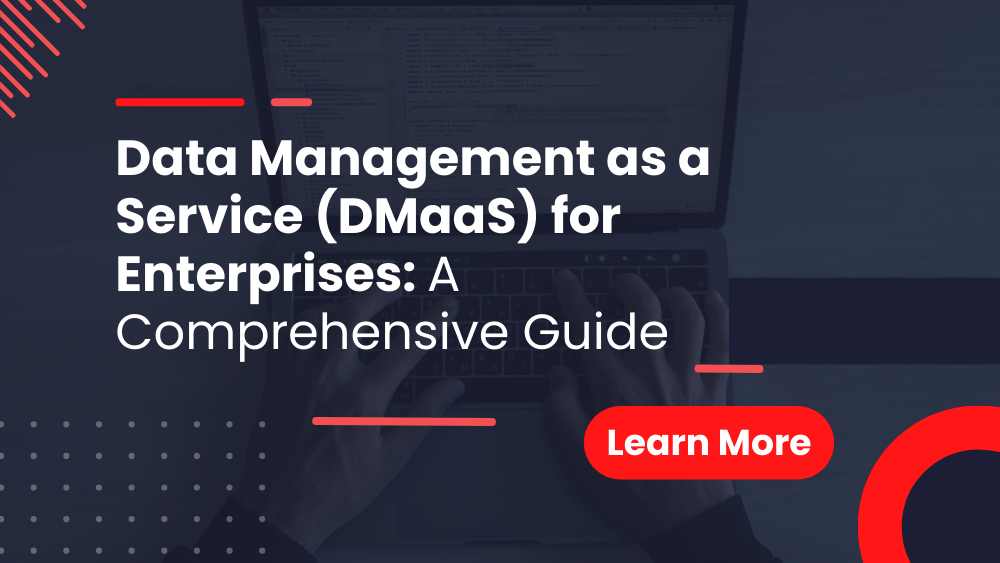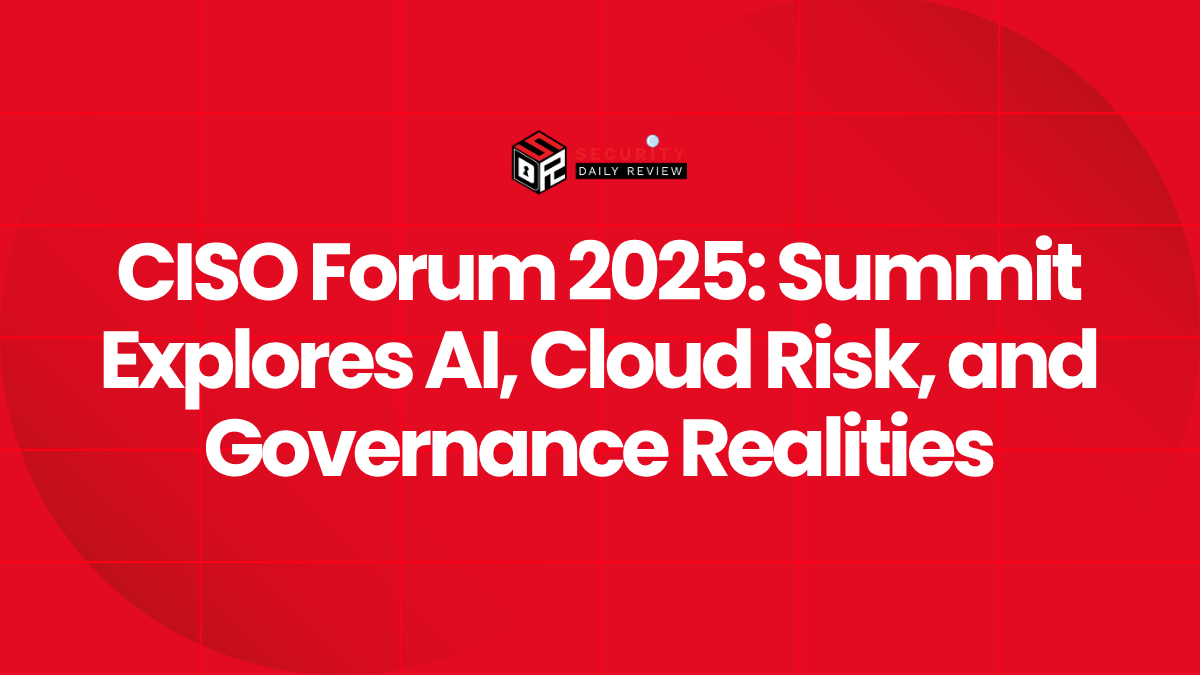Data Management as a Service (DMaaS) cuts through the complexities of managing vast amounts of data. Siloed systems in enterprise environments create fragmented data that hinders insightful analysis. Extracting meaningful insights at scale becomes a challenge, and maintaining on-premise infrastructure consumes valuable resources that could be directed towards strategic initiatives.
In this blog, we discuss how DMaaS leverages an organization’s most valuable asset through streamlined data management. We will explore the key capabilities of DMaaS and how it simplifies data management, in addition to tips and best practices for integrating DMaaS into your organization’s infrastructure.
What is Data Management as a Service (DMaaS)?
Data Management as a Service (DMaaS) refers to cloud-based services that allow organizations to outsource the management of their data from various sources onto a centralized, secure platform.
With DMaaS, enterprises can leverage on-demand access to powerful data management functionalities like integration, storage, transformation, governance and analytics without having to build and maintain their own costly infrastructure.
The service provider assumes responsibility for maintaining hardware infrastructure, software, updates, security patches and backups – eliminating these operational burdens for the customer.
DMaaS provides organizations with unified, policy-based control over their data ecosystem and empowers efficient self-service access for various stakeholders.
DMaaS: Key Features That Empower Your Data Strategy
- Scalable and Flexible Pay-Per-Use Pricing Model
DMaaS providers offer elastic pricing where customers pay only for the resources they consume, such as storage, queries, and users. This allows organizations to scale data operations up or down instantly based on changing needs, avoiding over-provisioning costs.
- Automated Data Migration
DMaaS platforms seamlessly integrate with on-premises and cloud data sources via agents and APIs. They automate the discovery, cataloging, and migration of metadata, as well as the bulk transfer of files and objects onto a centralized cloud repository securely.
- User-Friendly Self-Service Portal
DMaaS platforms feature web consoles and portals that allow business users to browse centrally stored data, build reports and dashboards, detect anomalies, label records, and monitor access logs without needing specialized data engineering skills.
- Robust Security and Compliance Measures
With features like encryption, multi-factor authentication (MFA), audit logs, data masking/filtering, and retention policies, DMaaS platforms protect sensitive data at rest and in motion, ensuring adherence to compliance standards such as GDPR, HIPAA, and CCPA.
- Real-Time Tracking and Monitoring Dashboards
Administrator dashboards offer a single view into platform resource usage, SLAs, concurrent user figures, data ingestion flows, and backup statuses, enabling proactive maintenance and management.
- Seamless Integration with Existing Systems
DMaaS can be bi-directionally integrated with databases, data warehouses, analytics tools, CRM, ERP, and other line-of-business systems through APIs and connectors, enhancing overall data ecosystem connectivity.
Maximize Value from Your Data with DMaaS: Powerful Business and Operational Benefits
There are numerous advantages for enterprises to leverage DMaaS compared to managing data infrastructure in-house.
Go Beyond Cost Savings and Achieve Operational Efficiency
DMaaS eliminates the need for enterprises to purchase and maintain costly hardware, software licenses as well as hire specialists to run complex on-premises data systems. With DMaaS providers managing the infrastructure, enterprises gain significant savings while focusing internal resources on more strategic initiatives.
Scale Workloads with Flexible Data and Compute Resources
DMaaS platforms are designed to automatically scale based on usage without capacity planning limitations. Enterprises can easily scale storage, compute and analytics resources up or down based on changing business needs. For example, during sales promotions or product launches, transient compute needs for running sophisticated ML models on customer datasets can be fulfilled simply by provisioning additional resources via the provider’s control plane and paying only for the heightened usage duration. There is no requirement to procure, setup and maintain additional servers.
Focus on Core Business with Industry-Leading Security and Compliance
DMaaS providers implement robust security measures, automated backup policies as well as advanced access controls and data governance best practices to ensure 24/7 data protection and compliance with industry regulations like GDPR, HIPAA, etc. Features such as multi-factor authentication, network access controls, endpoint monitoring, data encryption etc are always-on offerings. Compliance tasks like sensitive data discovery, retention policies, access logs are simplified through provider platforms.
Gain Actionable Insights from Your Data with Improved Management and Analytics
DMaaS platforms provide a single interface to integrate, organize and search enterprise data sources. Advanced analytics and AI/ML capabilities also help enterprises glean insights faster for better decision making. Features like data cataloguing, data lineage, metadata tagging, automated ETL pipelines, interactive query and visualization dashboards help democratize data intelligence across business teams.
Drive Innovation Through Rapid Experimentation and Development
With the data management stack modernized and consolidated in the cloud, enterprises can focus internal resources on developing new data-driven products and services to gain competitive advantage. For example, streamlined data access allows rapid experimentation with personalization algorithms or predictive maintenance models which can be quickly scaled enterprise-wide once validated.
Deliver Exceptional Customer Experiences with Deeper Customer Understanding
Deeper customer insights from a centralized customer data repository allows enterprises to deliver hyper-personalized experiences across marketing, sales and service touchpoints. Single customer views, behavioral segmentation, predictive recommendations and contextual offers can improve conversion rates and customer lifetime values.
DMaaS for Every Need: Common Use Cases Across Industries
Backup and Disaster Recovery
DMaaS platforms provide robust backup and disaster recovery capabilities for all critical organizational data assets. Comprehensive backup policies can be configured for databases, file servers, applications and virtual machines. Enterprises gain always-on data protection with features such as versioning, point-in-time recovery, immutability, verification and encrypted transmission. Fast, hassle-free restores from any point-in-time help maintain business continuity in the event of data loss or corruption scenarios. Cross-region replication further aids geo-redundancy.
Hybrid and Multi-Cloud Management
The DMaaS controller acts as a single pane of glass for managing data across on-premises, private and public cloud infrastructures in a standardized way. It facilitates backup, replication, archival and disaster recovery of workloads across heterogenous environments. Consistent governance, security and visibility over distributed data enables creation of hybrid data architectures. The platform relieves management overheads of operating disparate systems silos.
Data Analytics and Business Intelligence
Built-in analytics and visualization tools allow actionable insights from the centralized data pool. Features like ad-hoc querying, predictive modeling, report scheduling and dashboards help democratize data-driven decisions. ML/AI assistants automate complex ETL/data preparation. Together these capabilities accelerate traditional BI project cycles from months to days or hours, improving organizational agility.
Data Warehouse and Lakehouse Modernization
DMaaS simplifies the migration of schemas, files and streaming data from on-prem data marts into scalable cloud data stores. It offers automated workflows for normalization, typecasting, deduplication and loading into data lakes, data warehouses and analytics databases. Evolution is eased through flexible schema management and metadata tagging. On the other hand, joint analytics of batch and real-time workloads help optimize insights.
IoT and Edge Computing Management
The DMaaS platform is well-suited to ingest high-velocity, high-volume industrial and sensor data at the network edge via lightweight agents. Streaming analytics capabilities process and alert on real-time metrics. Centralized information management and governance bring transparency to diversified machine datasets. Edge processing on the other hands balances data sovereignty and core infrastructure relief.
Data Science and ML Operations
Built-in ML platforms on the DMaaS abstract away infrastructure complexities for data scientists. Teams enjoy governed self-service to both production and non-production data through CI/CD pipelines. Model versions are tracked and production involves no extra ETL overhead. In addition, governance controls ensure responsible operationalization aligned with business objectives.
Data Governance and Compliance
Robust data governance features implement accurate policy enforcement, auditing and oversight. Centralized policy definition, role-based access controls, sensitive data discovery and redaction help satisfy stringent industry regulations such as GDPR, HIPAA, CCPA etc. DMaaS’ comprehensive logging and audit trails simplify regulatory requests and ensure privacy.
Make an Informed Choice: Critical Components in Evaluating DMaaS Options
When evaluating DMaaS providers, enterprises must assess the following criteria:
Platform capabilities for key data management and governance functions: This includes metadata management, data quality check, master data management, data science toolchain etc.
Comparing roadmaps to help judge future-proofing: Key areas to evaluate include – Metadata and data catalog capabilities for indexing, tagging and search.
Master data management functions for cleansing, matching and linking of critical customer, product and reference data. This includes:
- Data quality monitoring, matching rules and workflows for ensuring accuracy and consistency.
- Data prep and ETL tooling for schema mapping, transformations and automated workflows.
- Data science modeling and machine learning tools integrated for building, deploying and managing models.
Security certifications and track record of data protection: such as ISO 27001, SOC 2 Type 2, HIPAA, PCI DSS help assess provider maturity and robustness of access controls, encryption etc.
Important practices to look for include: Encryption of data at rest and in transit, multifactor authentication for access, audit logging and monitoring of anomalies, vulnerability management process, incident response procedures.
Scalability, performance benchmarks and SLAs for critical factors: Like IOPS, throughput, query response times, backup/restore latencies. Key attributes to analyze are horizontal and vertical scalability limits, proven benchmark results, monitoring dashboards showing historic performance, comprehensive and actionable SLAs with penalties.
Integration with common data sources, databases, analytics and collaboration tools: Such as databases, data warehouses, CRM systems, data science notebooks – out of box or via custom development.
Professional and managed services for custom implementations beyond vanilla offerings: For example, availability of expertise and managed support aid complex deployments. Assessment of past experience or capabilities, certification programs, implementation partners and 24/7 support models.
Adopting DMaaS the Right Way: Actionable Tips for a Seamless Integration
Define Data Strategy and Governance Framework
Establish a clear data vision and roadmap aligned to business goals. Conduct regulatory research, classify sensitive attributes and define retention schedules upfront. Design governance structures around standard operating procedures, review boards, separation of duties and guidelines around data sharing, access entitlements etc. Establish metrics to measure conformance and benefits realization over time.
Perform Data Discovery and Cataloguing
Perform comprehensive data discovery and profiling across source systems. Map dependencies, integrate metadata from sources and classify entities. Build a centralized golden record of metadata using tagging standards. Validate semantics, ensure stewardship and maintain documentation of schema evolutions and linkages. Automate metadata tagging through ML as volumes grow.
Prioritize Workloads Based on Business Needs
Conduct impact-risk analysis of workloads to prioritize mission-critical vs informative datasets for migration. Profile workload attributes, estimate storage capacity needs, review access patterns and forecast compute requirements. Optimize infra budgeting based on current and predicted near future needs to scale seamlessly.
Implement Robust Access Governance and Identity Management
Establish organizational identity sources and integrate SSO with partner directories. Implement standardized role models like privileged access, data owner/steward. Define access policies controlling data views and permissible activities. Define provisions around separation of duties and least privilege access. Continually refine and re-certify entitlements based on job rotation.
Monitor Baseline Metrics and Manage Change Control
Establish baseline metrics and monitor platform health, SLA achievement, security posture and compliance conformance. Track incidents, problems, known errors and implement automated remediation. Formalize a change approval workflow involving impact assessments, backward compatibility reviews, rollback arrangements before production changes.
Ensuring High Data Quality Through Standardization and Automated Validation
Ensure consistent application of rules for formatting, deduplication, attribute standardization and validation across migrated datasets. Define SOPs and automate regular data quality jobs covering scans, matching, anomaly detection and remediation workflows. Monitor and improve enrichment processes continually.
Envisioning New Possibilities: Emerging Trends Shaping the Evolution of DMaaS
Trusted Data Sharing via Distributed Ledgers
Annotating metadata definitions on blockchains brings transparency to data meaning and provenance. This helps ensure data is annotated and interpreted correctly when accessed across organizational boundaries. Non-repudiation features prevent unauthorized changes to semantic definitions over time.
Automated Data Stewardship with AI
Advanced AI techniques like NLP, computer vision and reinforcement learning will augment human data stewards. Intelligent systems aid with syntax-error prone tasks like classifying entities, schema mapping, attribute standardization, permission configuration at scale liberating experts for higher value work.
Democratized Insights via Data Marketplaces
Governed sharing of anonymized, aggregated insights helps unlock alternate monetization models. This could involve micro-payment based access to derivatives of proprietary datasets to aid public services or startups. Proper incentive models can encourage collaborative data utility.
Pervasive Intelligence at the Edge
On-device and fog computing architectures analyze IoT and sensor data with minimal latency, improving automation, reliability and safety. Edge applications benefit from federated analytics while preserving data residency, bandwidth and core infrastructure usages.
Quantum Computing for Encrypted Analytics
As quantum algorithms advance, homomorphic encryption schemes will enable queries and machine learning over encrypted datasets without compromising privacy. Exponential compute power aids fighting hitherto unsolved challenges around cybersecurity.
Self-Driving Data Pipelines
Advanced ML algorithms continually monitor dataflows, auto-tune ETL parameters, self-heal from failures and rebalance load in real-time. This maintains predictability, security, and efficiency of data supply chains as technologies around it rapidly advance.
Experience-based Data Stewardship
“Serious data games” leverage gamification principles to both educate individuals and crowdsource insight. Interactive simulations and social learning networks help cultivate a data-literate workforce that can apply knowledge responsibly at scale.
Conclusion
Data will define the future of business success in an increasingly digital world. But optimizing its possibilities requires adopting modern solutions that streamline management burdens.
DMaaS levels the playing field by delivering the tools required to extract value from information that was previously inaccessible or misunderstood. Taking that first step unlocks immense potential to automate processes faster and make smarter decisions to outperform competitors.
The organizations that move fast to leverage this strategic asset through a centralized platform will be well-positioned to prosper in the coming decades.









